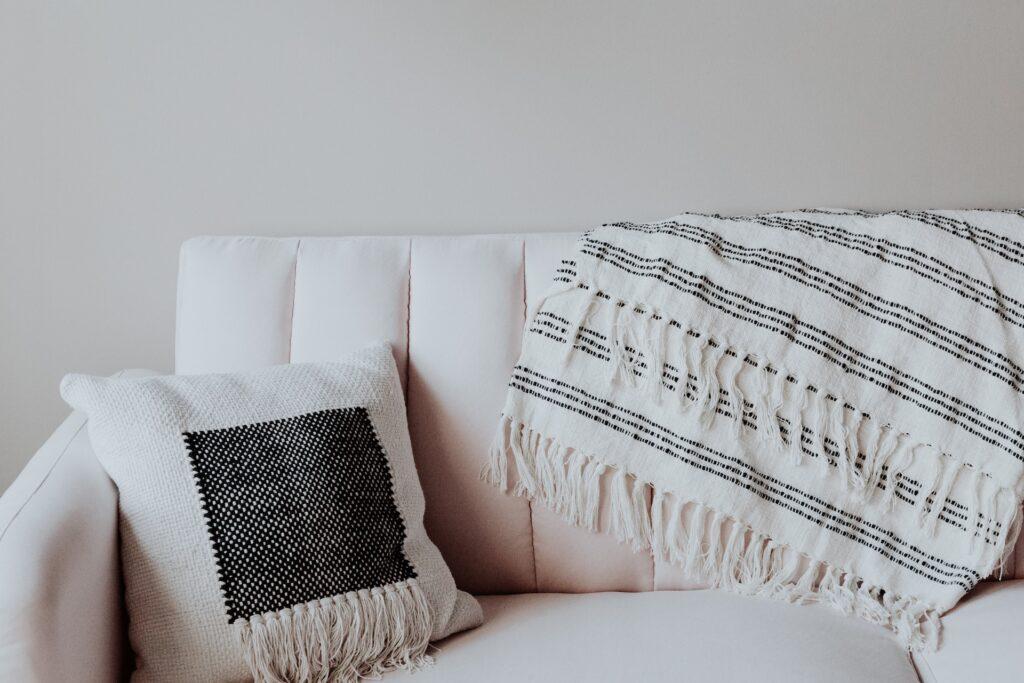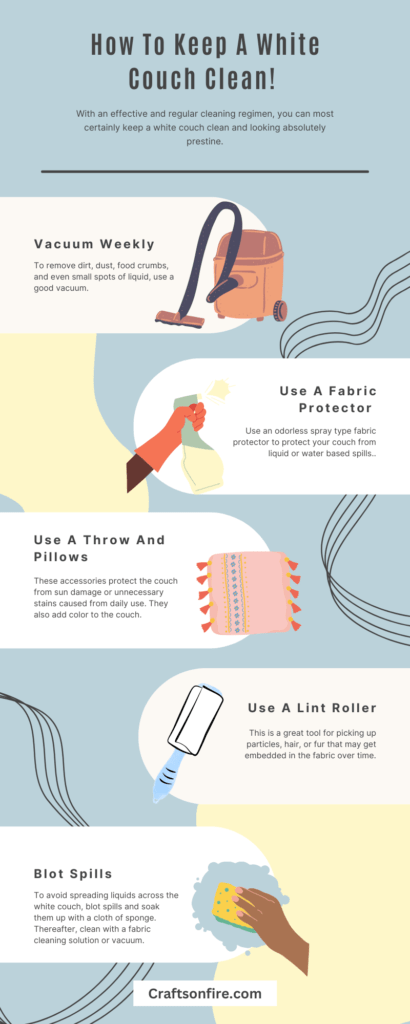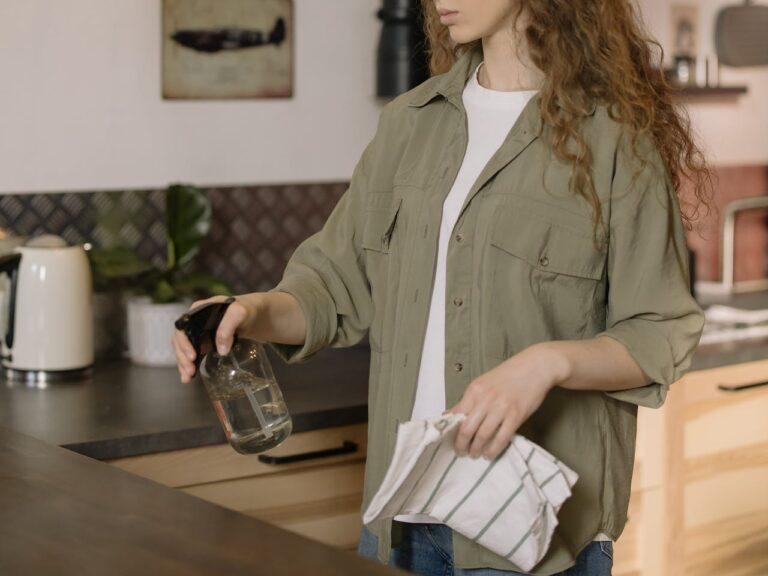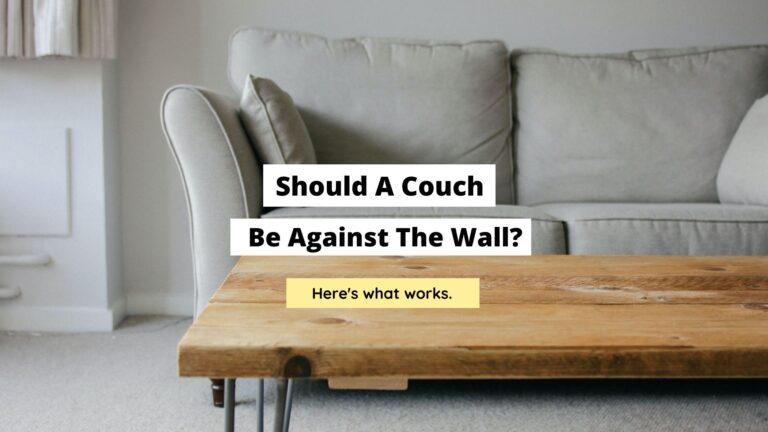How To Keep A White Couch Clean (The Ultimate Guide)

If you’re looking for an absolutely attractive addition to any living space, you would be remiss not to consider a white couch. They are considered to be the most stylish and modern color couches, while adding brightness and a sense of airiness to any room. However, it’s also true that keeping a white couch clean is not an easy task. Due to the nature of its color, dirt, dust, and stains are far more visible than on any other color couch. So, this article is going to focus on how to keep a white couch clean.
More than anything, you have to be vigilant with a white couch. Whenever you notice someone eating or drinking something while sitting on the couch, check to see if they dropped food or spilled liquids as soon as they’re done.
In this article on how to keep a white couch clean, we are going to focus on the following sections:
- Preparing a white couch for use.
- Regular maintenance tips and tricks.
- Spot cleaning tips.
- Deep cleaning tips.
- Preventative measure to protect a white couch.
I promise you that with some attention to detail, preventative measures, and effective cleaning solutions, you should be able to keep your white couch looking beautiful and pristine.
Without wasting any time, let’s get into the crux of how to keep a white couch clean.
Table of Contents
Preparing A White Couch For Use

1. Choose a suitable material for the couch
When it comes to keeping a white couch clean, it’s best to start with choosing the right material.
The right type of upholstery fabric will be resilient to stains, damage, or discoloration. In most cases, upholstery fabric should be able to withstand regular use while maintaining its original color.
As far as I know, leather and vinyl are great upholstery fabric choices for a couch, as they can be wiped down easily with a damp cloth.
Leather tends to be less absorbent of liquids and food, which is why it’s one of the most popular choices for white couches.
2. Apply a fabric protector
Depending on where you purchase your couch from and how much it costs, there’s a chance that a fabric protector has already been applied.
But, if it hasn’t, it would be a great idea to apply a fabric protector for added protection, which helps to repel liquids, oils, and foods that cause stains.
One of the industry’s leading brands for couch fabric protection is Scotchgard. It comes in a odorless spray-can that helps protect fabrics from a lot of liquid spills.
Not only is it effective, but it’s suitable for use on different types of materials like cotton, wool, and even silk.
3. Make your couch a no-food or no-drink zone
“Prevention is better than cure.” I couldn’t agree more with this statement. If you’re going to invest a ton of money into expensive white couches, you may as well avoid exposing them to unnecessary damage or stains from food or liquids.
If you’re having guests over, invite them over to the dining room to eat. If they bring kids over, it may be a good idea to do the same.
But, if you have no choice but to entertain guests who are seated on your couch, it may be a good idea to lay a clear, fitted plastic sheet over the couch to accommodate them.
4. Keep pets off the couch
Most of us have a soft spot for animals. Having a couple of cats and bird babies brings a lot of joy and life to a home.
But, I’d be the first to admit that they can wreak havoc on your furniture, especially dogs and cats.
The only suggestion I have is to train your pets to stay off the couch.
The last thing you want is for them to urinate, defecate, or scratch the upholstery fabric. If they do sleep on the couch, try vacuuming the couch once a week.
5. Add a side table next to each arm rest
Earlier, we glossed over inviting guests to the dining room to eat.
However, I understand that it may not be convenient to do so. In the event that you want to allow guests to eat food and drink liquids while they’re sitting on the couch, it would be a good idea to add side tables next to each arm rest.
In this way, you can minimize the chances of them spilling their food or drinks onto the couch itself.
6. Use a throw on the couch to protect portions of it
I’ve done this in my own home, and it has worked. By adding pillows and throws to the couch, I’ve minimized the amount of surface area that can be exposed.
This means that certain spots on the couch are protected from damage due to harsh sun exposure or spills.
Also, these little decorative pieces tend to make a white couch appear more colorful and inviting.
Regular Maintenance
1. Vacuum regularly
Vacuuming the couch regularly is an essential step in keeping it clean. Not only will this help to remove loose dirt and dust, but it will also keep the fabric from becoming matted down. Further, use an upholstery attachment to pick up any stubborn dirt or pet hair.
Make sure to vacuum between the grooves of the couch. In the event that the couch has removable seats, lift them up to vacuum the base. Dirt, crumbs, and dust tend to accumulate in this area.
Lift the couch off the ground if you must, and vacuum underneath. This ensures that nasty odors or mold don’t grow and spread. It is a well known fact that mold and bacteria prefer moist and dark places to replicate.
This can cause a health hazard that eventually spreads onto the couch and damages it. Regular cleaning is non-negotiable when it comes to this situation.
Once per week will more than suffice.
2. Use a lint roller
A lint roller is great for picking up any particles embedded in the fabric over time. This will help keep your couch neat by removing any stray bits of fuzz.
If you allow pets to sit or sleep on the couch, it’s essential that you have a lint roller on hand.
All that fur is bound to dirty up the couch. It’s best to remove it with a lint roller if the vacuum doesn’t get all of it.
3. Fluff and rotate cushions and throws
Don’t forget to fluff and rotate the cushions every few weeks. This will help them hold their shape better and prevent sagging or indentations from occurring. It also ensures that each side of the cushion gets equal wear.
If these cushions are exposed to sunlight, it can result in damage or discoloration. To prevent this, simply rotate cushions and throws every week or two.
4. Use a fabric cleaner
Needing to spot clean or wipe down white couches is inevitable. Rather than relying on just water (which could cause water stains) or panicking when something spills on the couch, invest in a couch fabric cleaner.
These fabric cleaners come in a bottle or spray container. They are usually safe for most types of upholstery fabrics and can kill most germs and bacteria.
Just be careful with the color of the fabric cleaner. Opt for something clear or translucent to avoid any possible staining.
Spot Cleaning Tips For A Couch

1. Blot the spill immediately
The best way to avoid stains is to act fast. As soon as a spill occurs, blot the area gently with a clean cloth or paper towel to soak up any liquid before it can soak into the fabric. Do not rub or scrub, as this may cause the stain to spread.
Simply fold a cloth in half and blot the spill as fast as you can. Do not use too much force when blotting because you don’t want to push the liquid further into the couch.
Use a cloth that is known for soaking up spills quickly.
Alternatively, you can use a sponge to soak up liquid that has pooled on the couch. It could be just as effective or more effective than blotting with a cloth.
2. Use cleaning products designed for upholstery
Once all the liquid has been blotted away, use a specially formulated cleaner suited for fabrics like those used on couches.
Test in an inconspicuous area first to ensure it won’t cause discoloration, then apply to the stained area.
If you invested in a fabric cleaner, as mentioned before, grab it quickly and get to work. It should be able to prevent any permanent staining or damage from occurring.
3. Don’t forget to rinse
Once you have used a cleaning solution, follow up with a clean cloth dampened with water to remove any residue that may have damaged the fabric.
Again, be very careful with water. You do not want to cause any water stains so make sure the cloth isn’t drenched.
This will also help prevent harsh chemicals from remaining on the couch, potentially causing discoloration.
4. Vacuum after spot cleaning
Lastly, run the vacuum over the couch to pull up any residual liquid that may be sitting just underneath the surface of the couch.
In the event that you have a powerful vacuum with new and advanced technology designed to suck up liquid, I would advise you to use this almost immediately after you blot the spill with a cloth or sponge.
Deep Cleaning Tips
1. Schedule a professional cleaning service
It is crucial to have your couch professionally cleaned occasionally. It will enhance the deep cleaning of the fabric and remove ground-in dirt that can be difficult to remove with regular maintenance.
At least once every six months to a year, invest in a professional cleaning service. They’ll be able to pull up dirt that has been lodged deeply into the fibers of the couch.
Also, they have the right type of products and equipment to restore or preserve the natural color and shine of a couch.
2. Spot test on a small and inconspicuous area
Before you use any harsh chemicals or cleaners on your couch by yourself, it is essential to test them out in a small, hidden area.
This will help prevent discoloration or damage to the fabric and keep your couch looking great.
3. Use a steam cleaner to remove deep stains and dirt
If you have particularly stubborn stains or dirt buildup, a steam cleaner can be used to get them out.
In addition to removing dirt, grease, and other tough stains, steam cleaning sanitizes surfaces by getting rid of allergens and pathogens.
Make sure to use the lowest setting possible to avoid any fabric damage.
Final Thoughts
After reading this article, I’m sure you would agree that maintaining a white couch requires some extra work and dedication.
Regular maintenance such as vacuuming, spot-cleaning spills quickly, and using deep cleaning solutions can help preserve the appearance and feel of a white couch. Also, investing in a fabric protector or using slipcovers will help extend your couch’s life.
With that being said, I hope you found this guide on how to keep a white couch clean to be thoroughly helpful and practical.
Be sure to check out some of our other cleaning related articles linked below.
Related Posts:
What color coffee table goes with a white couch?




